What Were the Major Froms of Art That Emerged in the Time 1920
After the First World War, the roaring 20s were a time of change. Personal expression and the rebellious idea of the influential advanced movements dominated the 1920s fine art. The innovations occurring at this time in painting, design, architecture, fashion, crafts, and music are still recognizable and influential. The modern art and the gimmicky fine art production nosotros have come up to know owe much to the 1920s art and its authors. Some of the nigh significant movements, such equally Dada, Surrealism, Expressionism, and the fabulous Fine art Deco had their genesis during this time. Such events in art in the 1920s helped to re-define and re-shape all the major artistic disciplines.
Are you interested in collecting 1920s art? View this print by Marc Chagall available on our Marketplace
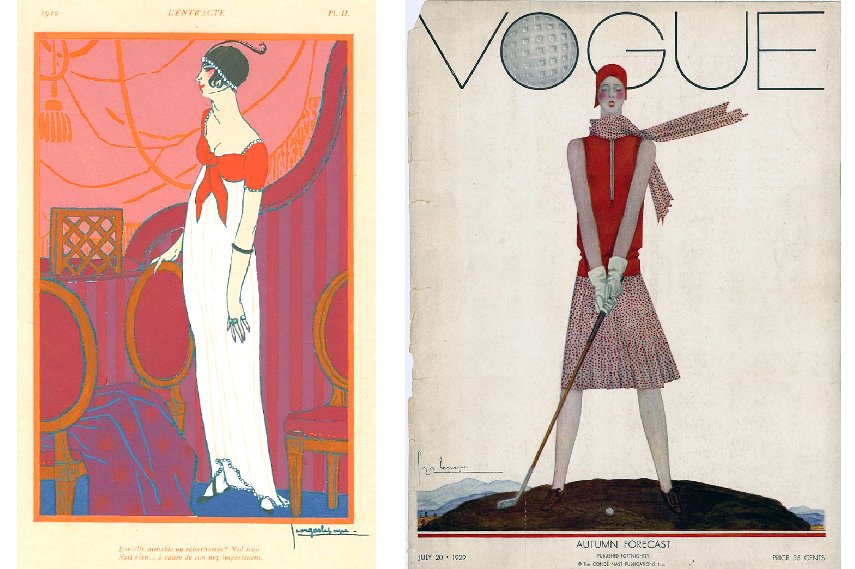
What Hides in 1920s Art World?
1920s art reflected the period in the aftermath of the World War I. As a remarkable time of creativity, the bold movements brought forth the modify in the way society viewed itself. The famous writer Scott Fitzgerald named this period every bit the Jazz Historic period. Not surprisingly, the idea of modernism was embedded in inventiveness, while all the major authors challenged the norms and traditional way of thinking, thus altering the view of the world[one]. Themes apropos sexuality, engineering science, and social progress were prominent in the civilization and art in the 1920s. Artists, musicians, writers aimed to produce something innovative and dynamic. As a recognized art form, photography stepped into the spotlight, and the world of advertising was still an loonshit where 1920s artists contributed and created some of the almost historic colored, and black and white advertisements[two].
For this civilisation of progress, experimental is the best give-and-take used to describe the creative trends of the 1920s art decade.

Major Artists and Movements of the 1920s Art Scene
Replacing the elaborate styles associated with Victorian era, the new movement Fine art Deco flourished during the 1920s. At this time, major realist painters like George Luks continued to be popular alongside the new understanding of painting based on abstraction and reflections of nature. Painter Georgia O'Keeffe, who is nevertheless celebrated for her depictions of nature scenes, first became popular in the 20s. Her experimentations with abstract forms in painting went paw in paw with the broadening of the sculpture product every bit well. For the revolutionary thinking regarding the 3-dimensional product, much is owed to the Dada movement and the thoughts of Marcel Duchamp. Alongside Dada, Surrealism impacted the visual arts, literature, theater, film, and music[3].
Fine art Deco
Originating in Europe, Art Deco was a ascendant style in design and architecture of the 1920s. Equally such it quickly spread to Western Europe and N America. Simply, what is truly defined as the fine art deco period and how influential was the art deco decorative style? In the U.s.a., New York City's Chrysler Building typified the Fine art Deco way while other examples could be constitute in Chicago, Los Angeles, and San Francisco. Regarding the ii-dimensional product, the art deco artists displayed an interest towards the mixture of traditional crafts with automobile age imagery and materials[4]. Ane of the most famous artists of the 1920s fine art deco catamenia was definitely Tamara de Lempicka, with her portraits of the bourgeoisie and the progress of the era.
Characterized by rich colors, lavish ornamentation, and geometric shapes, the movement was historic for its pattern designs and poster art. In such examples axiomatic is the dominant rectilinear designs even though fine art deco artists often drew inspiration from nature and used curved lines besides.
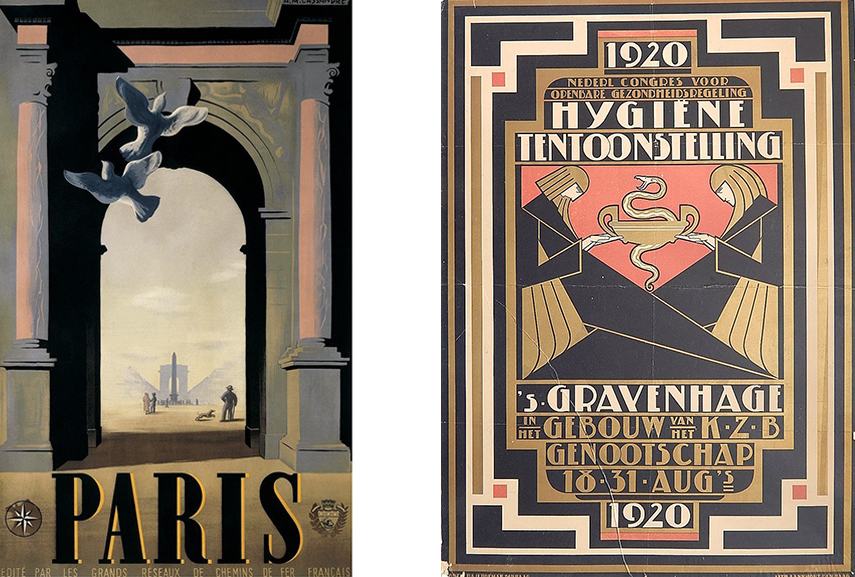
Expressionism
Equally a modernist movement, Expressionism originated in Germany during the 1920s art period. Initially every bit a manner in both poetry and painting, it emphasized the presentation of the world, both external and internal, solely through a subjective perspective. This emotionally charged catamenia meant a boost for the creative cinema, marked past the 1920. film masterpiece by Robert Wiene, "The Cabinet of Dr. Caligari". Radically distorting its images for the emotional effect, passions and moods were more important than the concrete reality. Partly as a response to the growing social anxiety and the idea of the loss of spirituality, and partly as a reaction to Impressionist art, Expressionism was mostly inspired past the Symbolism motion of the tardily 19th-century, but also past modernistic currents and progress of the era. Some of its nigh famous painters include Edvard Munch, Wassily Kandinsky, Erich Heckel and Franz Marc. These artists introduced the new standards for fine art which later gave birth to Abstract Expressionism and the Neo-Expressionism fine art movement.
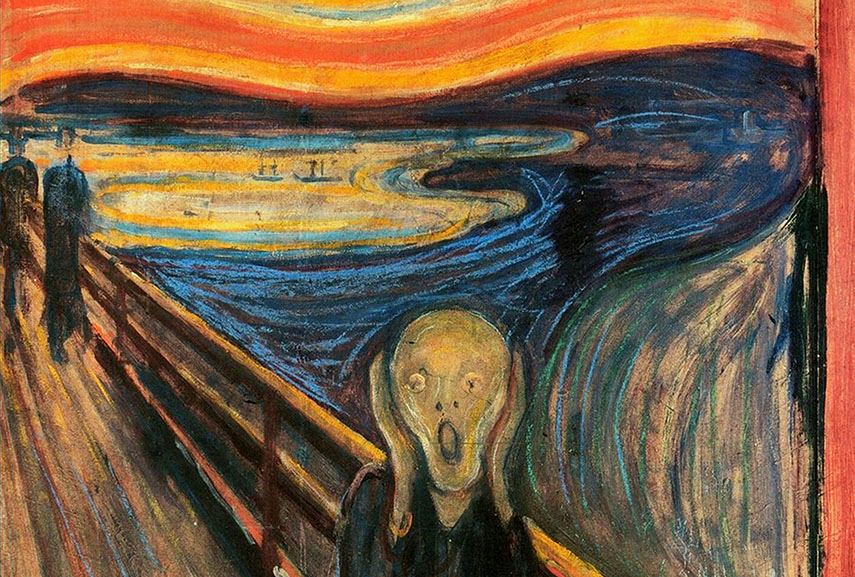
Dada
For 100 years Dadaism has been praised because of its influence and importance as one of the nearly important advanced movements.
Beginning in Zurich during World War I, it rapidly became an international phenomenon spreading to diverse cities in Europe and America. Opposing the cultural and intellectual conformity in art, ordinarily displaying political affinities with the radical left, dada artists gathered and engaged in activities such every bit public gatherings, demonstrations, and publication of art and literary journals. In regards to the visual fine art, the new concept praising the idea above the subject field was born. Marcel Duchamp is the father figure of the motion and his experimental nature brought forrard new ideas such as readymades. Influential for the original understanding towards sculpture product, idea of the readymades also influenced assemblage, constitute object pieces, and to an extent junk art and recycled art likewise. Praising machines, engineering science and Cubist elements were features evident in the dada collage pieces and other innovative artworks this 1920s fine art period left behind.
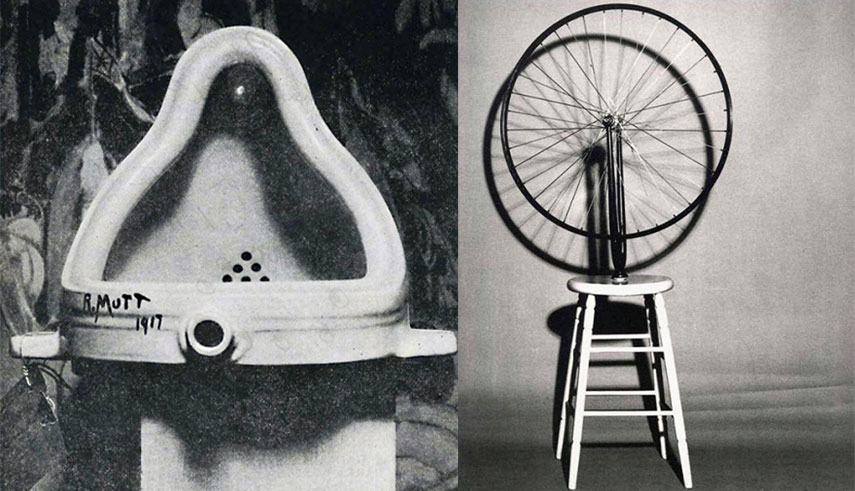
Surrealism
Surrealism arose from Dadaist activities during the state of war. Centered in Paris, it quickly became a cultural movement, rather than only creative. Perhaps the nigh influential of its forefathers, Andre Breton stressed the importance of Surrealism as a revolutionary movement. Assertive that their works expressed the philosophy backside the menstruation in which psychoanalysis was born, elements of surprise, juxtapositions, and importance of the dream-like worlds and the notion of the subconscious dominated. In 1924, Breton published his Surrealist Manifesto and divers the thoughts of the time every bit pure psychic automatism. Next to Breton, the Spanish self-proclaimed Genius Salvador Dali, known for some of the most idea-provoking and often erotic images, is now revered as ane of the crucial surrealist artists of the group.
Be certain to check out works by Salvador Dali on our marketplace!
Today, Surrealism photography is considered one of the important trends of the medium while questions concerning the lowbrow art and pop surrealism would lead to a amend agreement of the original Surrealism equally well.
For many, the period of the 1920s fine art is seen as the first modern decade responsible for the creation of concepts that the world follows even today. Equally an endlessly fascinating fourth dimension, artists pushed for the new and the revolutionary which helped create the art as we know it.
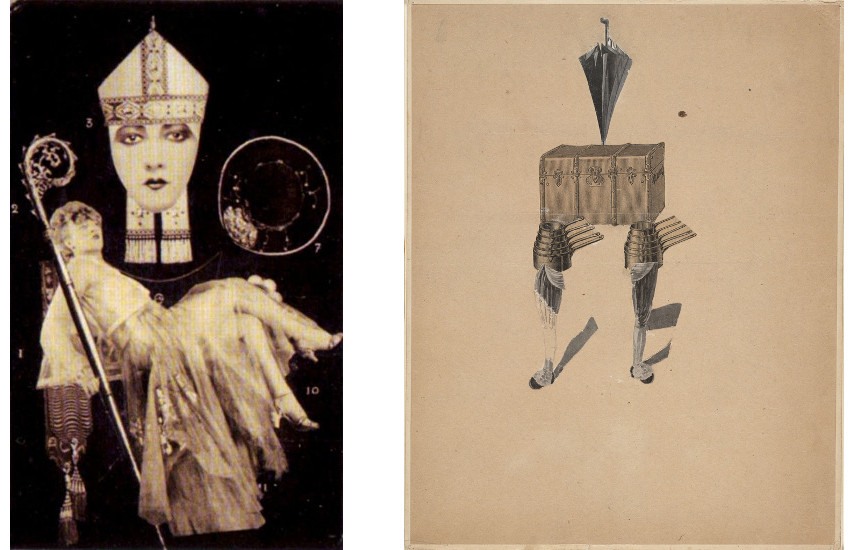

Editors' Tip: Art Deco
By looking at the politics and culture of Europe in the 1920s and early '30s, the writer of the book traces the chronology of the Art Deco Way. Beautifully designed and illustrated to reflect the motility it describes, Art Deco is analyzed through its innovations in painting, fashion, architecture, interiors, jewelry, crafts, and furniture. Taking us far back to the time of the movement's nascence, Cubism, Constructivism, Futurism, and Modernism are also reflected. Seen as the fourth dimension that art flourishes, the volume places Fine art Deco at the center of innovations and originality which helped to define this period as ane of the well-nigh important in history.
References:
- Dumenil, L., The Modern Temper: American Culture and Order in the 1920s, Colina and Wang, 1995
- Papini, R.,Arts in the '20s: Architecture and Decorative Arts in Europe , Antique Collectors Club Limited, 2005
- Whitworth Art Gallery< em>Annihilation Goes: Fine art and Pattern of the 20s and 30s , Whitworth Fine art Gallery (Manchester), 1987
- Duncan, A.,Fine art Deco Complete: The Definitive Guide to the Decorative Arts of the 1920s and 1930s , Thames & Hudson, 2009
All images used for illustrative purposes merely. Featured prototype: Art Deco Mural. Epitome via wallpaper.com; Robert Wiene - The Chiffonier of Dr. Caligari, 1920, motion picture withal; Tamara de Lempicka - Self Portrait in a Green Bugatti, 1929, detail; Salvador Dali - The Persistence of Memory, 1931; Elevator of the Chrysler Building (1930)
Source: https://www.widewalls.ch/magazine/1920s-art